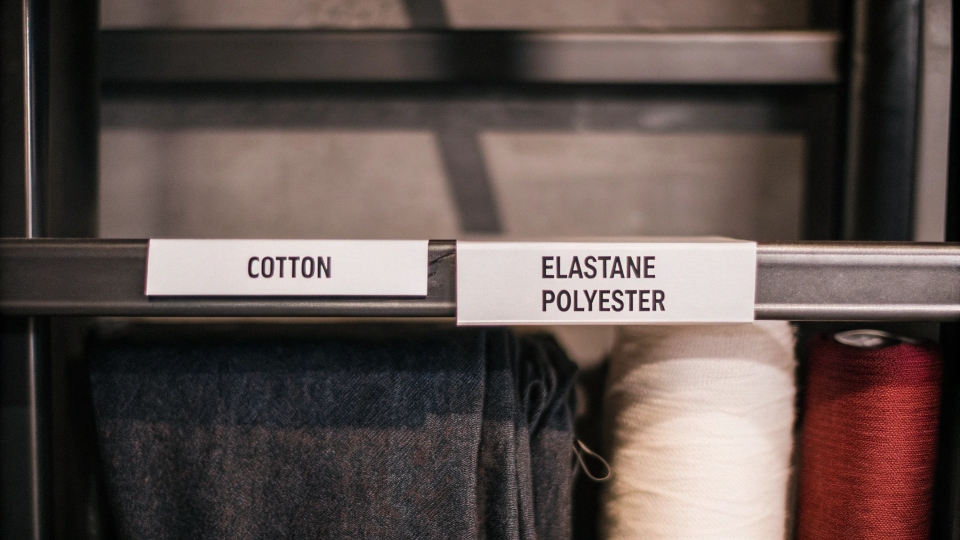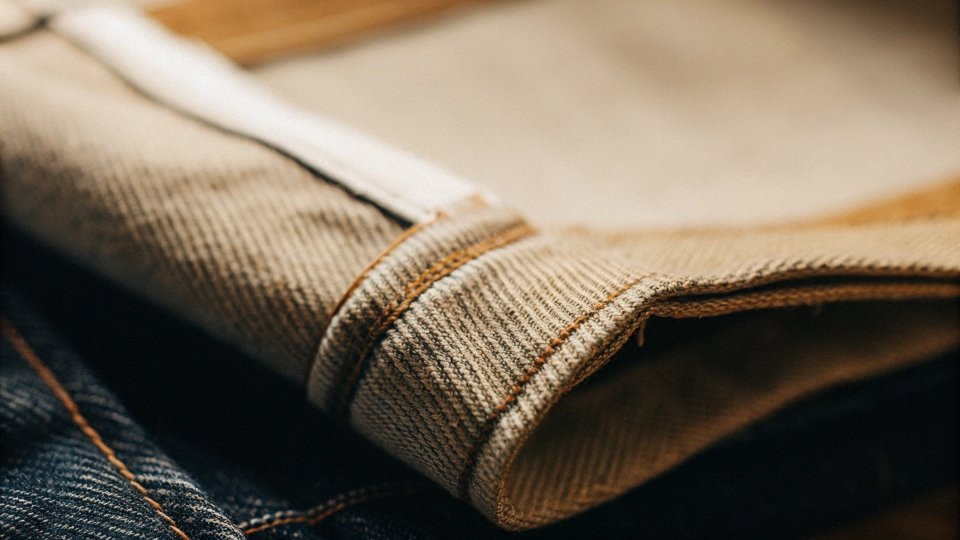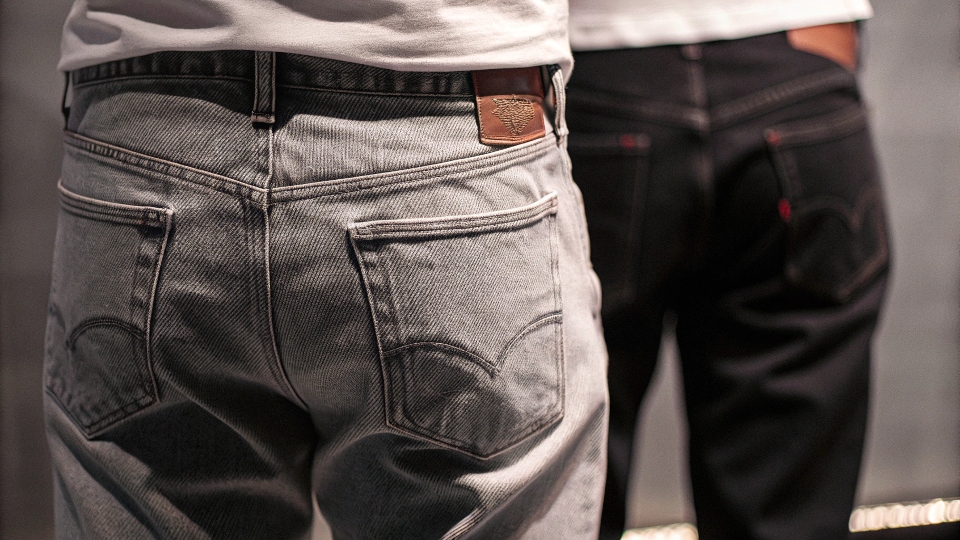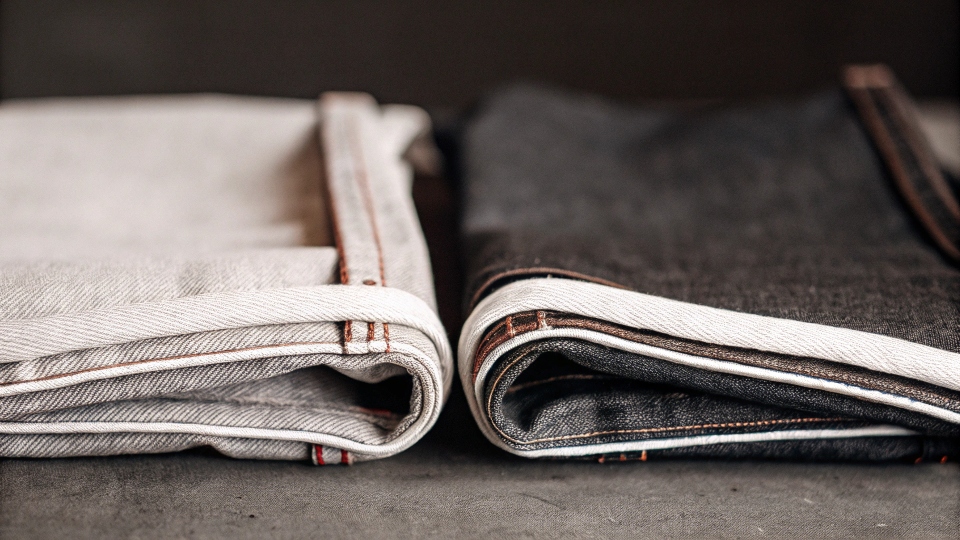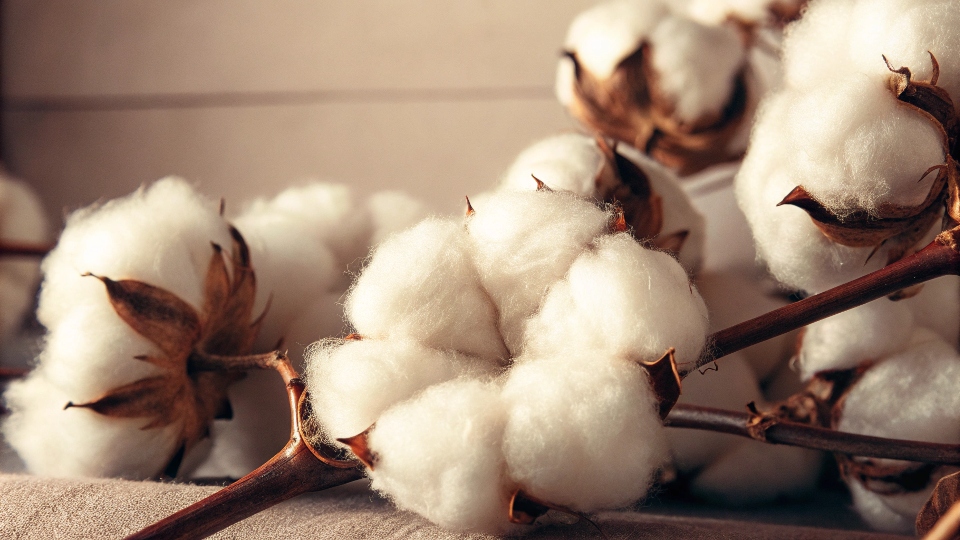You love your jeans, but the fabric tag is confusing. Is it natural cotton, synthetic plastic, or something else? This uncertainty can make caring for them very difficult.
Most jeans are a blend. They start with a base of natural cotton fiber for comfort, then add synthetic fibers1 like elastane for stretch or polyester for durability. Purely natural or synthetic jeans have become much less common.
The mix of fibers in your jeans is not a random choice. It's a very specific recipe. In my factory, a designer like Dean will specify the exact percentage of each fiber to achieve a certain look, feel, or function.
It's a deliberate choice we make to give the jeans qualities like comfort, toughness, or a perfect fit. Let's look at what's really in the fabric you wear every day.
What Are Most Jeans Made Of?
You want comfortable jeans that last. But the blend of fibers2 on the tag is confusing. Are you getting a quality natural material or a cheap synthetic mix?
Most jeans are predominantly made of natural cotton fiber3, often over 80%. They are then blended with a small amount of synthetic fibers like elastane (for stretch) or polyester (for strength) to improve their performance.
The recipe for denim is all about balancing the best of both worlds. We start with a strong foundation of natural fiber and then add synthetic helpers to solve specific problems. It's a partnership between nature and science.
The Natural Foundation
Cotton is the king of denim. It's the soul of the fabric. Nearly all jeans start with cotton because it's breathable, strong, and soft against the skin. It’s what gives denim its classic character.
For special cases, we might blend in other natural fibers. Adding some linen or hemp can make a pair of jeans much lighter and more breathable for summer. These fibers are great for warm weather, but the main ingredient is almost always cotton.
The Synthetic Helper
Synthetics fix the problems that cotton has. For example, 100% cotton can stretch out and lose its shape after a day of wear.
A tiny bit of elastane, usually just 1-3%, gives the jeans "recovery" so they snap back into shape. We add polyester to make the fabric tougher and less likely to wrinkle. It’s a workhorse fiber that adds durability, which is perfect for jeans you plan to wear a lot.
What Fabric Are Levi's Jeans Made Of?
You own a pair of classic Levi's. You think of them as pure, rugged cotton, but you're not sure if that's still true for their modern pants.
A classic pair of Levi's, like the 501 Original Fit, is traditionally made from 100% cotton. However, many of their modern fits, especially skinny or slim styles, are a blend of cotton with elastane4 for comfort and a closer fit.
For over a century, the answer to this question was simple: Levi's were made of 100% cotton denim. That fabric is the foundation of their entire history.
When we make heritage-style jeans for clients, they demand this for authenticity. The thick cotton is durable, it ages beautifully, and it tells the story of the person who wears it. This is the classic Levi's experience.
But today's customer often wants comfort right off the shelf. They want a jean that moves with them and hugs their body. A 100% cotton jean can't do that.
So, Levi's, like almost every other major brand, now offers a huge range of fabrics. Their "Stretch" jeans will have around 2% elastane. Their performance lines might include Tencel™ for softness or polyester5 for strength. The only way to know for sure what's in your pair is to check the white care tag sewn on the inside.
Are Any Jeans 100% Cotton Anymore?
You're looking for that classic, rigid denim feel. It seems like every pair of jeans you pick up has stretch. Is pure, old-school denim a thing of the past?
Yes, absolutely. Many brands, especially those focused on heritage, workwear, and the "raw denim" community, still make jeans from 100% cotton. They offer a more authentic feel and will fade in a more traditional way.
In my factory, we still run plenty of 100% cotton denim6. These jeans are for the purists. When we work with brands that want a vintage feel, this is the only option we consider.
There is a trade-off, of course. These jeans require a "break-in" period. They will feel stiff and maybe a little uncomfortable for the first few weeks. They do not have the instant comfort of a pair of stretch jeans that you can buy and wear easily the same day.
Their fans love them for exactly this reason. The way a 100% cotton jean wears, fades, and creases over time is completely unique to the person wearing them.
After a few months, a pair of broken-in 100% cotton jeans feels like it was custom-made for you. While stretch jeans dominate the big stores, 100% cotton denim is very much alive and well for customers who value authenticity and durability.
Is 100% Cotton Natural or Synthetic?
You see "100% Cotton" on the label. It sounds simple, but in a world of complex fabrics, you want to be sure you know what you are actually getting.
Cotton is a 100% natural fiber. It is a plant that grows from the earth. The soft, fluffy fiber that protects the seeds in the cotton boll is harvested, cleaned, spun into thread, and then woven into denim.
This is the most fundamental question, and the answer is refreshingly simple. Cotton is completely natural. It is not a plastic, and it is not made from chemicals in a laboratory. It is a vegetable fiber, harvested from the cotton plant. This is the reason people have used it to make clothing for thousands of years. Being a natural product is what gives cotton its best qualities and also some of its weaknesses.
| Property | Advantage | Disadvantage |
|---|---|---|
| Breathability | It lets your skin breathe, which keeps you comfortable. | It can absorb a lot of water and becomes heavy when wet. |
| Absorbency | It pulls moisture away from your body. | It can wrinkle easily and takes a long time to dry. |
| Strength | It's a durable fiber, perfect for tough clothing. | It can shrink in high heat or stretch out of shape with wear. |
That is why we often blend cotton with synthetic fibers. We take this amazing natural material and add a little bit of science to help fix its natural weaknesses. But at its core, denim will always be a natural product.
Conclusion
Most modern jeans are a smart blend of natural cotton and helpful synthetic fibers. This combination gives you the best of both worlds: comfort, durability, and a great fit.
-
Learn how synthetic fibers enhance the durability and stretch of jeans. ↩
-
Understand the specific fiber blends that create the perfect pair of jeans. ↩
-
Explore the benefits of natural cotton fiber in jeans for comfort and breathability. ↩
-
Discover how elastane contributes to the stretch and recovery of denim. ↩
-
Find out how polyester adds strength and durability to your favorite jeans. ↩
-
Learn about the appeal and characteristics of 100% cotton denim jeans. ↩

